https://www.bbc.com/future/article/20210308-rubber-the-wonder-material-we-are-running-out-of
Natural rubber is a uniquely tough, flexible and highly waterproof material. It puts tyres on our vehicles, soles on our shoes, it makes seals for engines and refrigerators, insulates wires and other electrical components. It is used in condoms and clothing, sports balls and the humble elastic bands. Over the past year it has played a pivotal role in the pandemic in personal protective equipment worn by doctors and nurses around the world.
In fact, rubber is deemed to be a commodity of such global importance that it is included on the EU's list of critical raw materials.
Unfortunately, there are signs the world might be running out of natural rubber. Disease, climate change and plunging global prices have put the world's rubber supplies into jeopardy. It has led scientists to search for a solution before it's too late.
But how has such an important commodity fallen into such peril in the first place?
The global supply of natural rubber – around 20 million tonnes per year – is produced almost entirely by fragmented smallholders working tiny plots of land in tropical forests. Millions of these workers tend to plantations in Thailand, Indonesia, China and West Africa, carefully stripping bark from the trees to extract a milky white sap which is shaped into sheets and dried in the sun. Between them, these farmers provide 85% of the world's natural rubber supply.
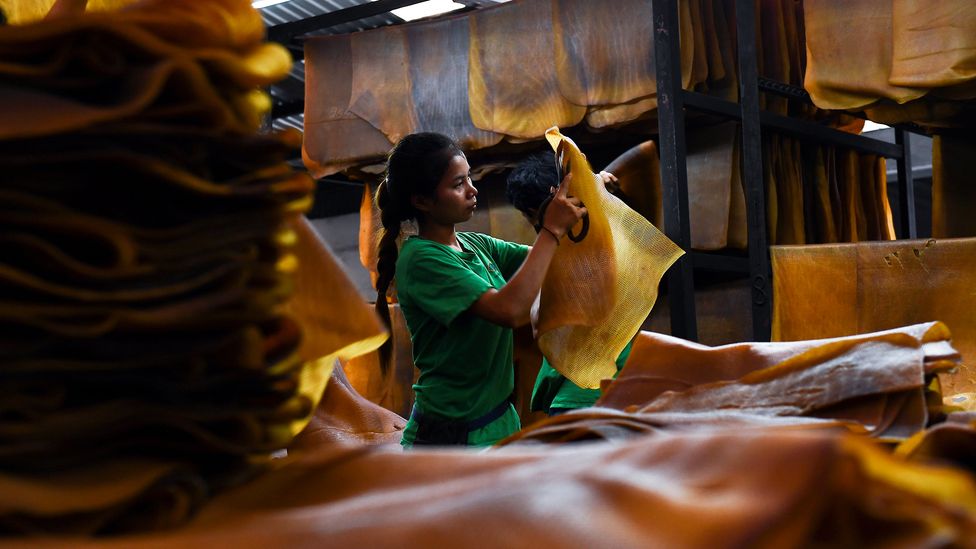
Most of the world's natural rubber comes from Southeast Asia, but low prices are causing some farmers to give up the crop
(Credit: Jonathan Klein/Getty Images)
But this fragile supply is under threat. A native of the Brazilian rainforest, the rubber tree Hevea brasiliensis is no longer grown commercially in the country due to the prevalence of South American leaf blight, a catastrophic pathogen which killed off the country's rubber industry in the 1930s. Strict quarantine controls have kept the disease contained to the South America for now, but arrival in Asia is thought to be almost inevitable.
In the meantime, farmers elsewhere in the world still face local pathogens such as white root disease and other leaf blights that have made the leap from neighbouring oil palm plantations. Climate change is also exerting its toll – Thailand's rubber production has been hit by droughts and flooding in recent years, with the latter also further spreading disease-causing microbes across growing regions.
A growing demand for rubber and short supply should be good news for the farmers, as it would make rubber more profitable to grow. Unfortunately, that's not the case. The price of rubber is set by the distant Shanghai Futures Exchange, where brokers speculate on value of this material alongside gold, aluminium, and fuel. "The pricing has nothing do with the cost of production," says Robert Meyer, co-founder of rubber buyer Halcyon Agri. Because of this arrangement, the price of rubber per tonne can vary three-fold from one month to the next, and in recent years has been held at very low values.
Low prices force farmers to over-tap their trees to obtain more rubber, weakening the plants and making them more susceptible to disease
This situation further jeopardises the supply of rubber. "The mathematics smallholders make is that income equals price times volume," explains Meyer. Low prices force farmers to over-tap their trees to obtain more rubber, weakening the plants and making them more susceptible to disease. The low prices have also discouraged planting of new trees to replace those at the end of their commercial lifespan, and many farmers have abandoned plantations entirely.
Eleanor Warren-Thomas is a research fellow at Bangor University, Wales, who has studied the dynamics of rubber plantations. "Oil palm and natural rubber make the same money per unit of land, but the labour input is higher for rubber," she says. "Because the rubber price is falling, farmers are switching from producing rubber to selling the timber for near term profit, and growing oil palm instead."
These factors combined means that the world is now at a point where the supply of natural rubber is not keeping up with demand. In late 2019, the International Tripartite Rubber Council warned the global supply would fall short by one million tonnes (900,000 tons) in 2020, around 7% of production. Then the pandemic hit.
Demand reduced immediately, and driven miles – the key measure for ultimate demand for rubber – dropped as countries went into lockdown. But rubber soon bounced back. "Demand outpaced even the most bullish predictions," says Meyer. As they came out of lockdown, Chinese citizens bought huge numbers of new cars, thanks to fears around the safety of public transport. Similar patterns are expected globally. "Demand has since eclipsed supply," says Meyer. "Now there is an acute shortage (of rubber) in destinations, and inventory held by tyre makers is very low."
Although synthetic rubber can be produced from petrochemicals, natural rubber has unique properties which even these synthetics can't match: natural latex gloves are more resistant to tear than nitrile ones, while aircraft tyres use natural rubber for its high elasticity and resistance to heat, which can build up from friction during landing.
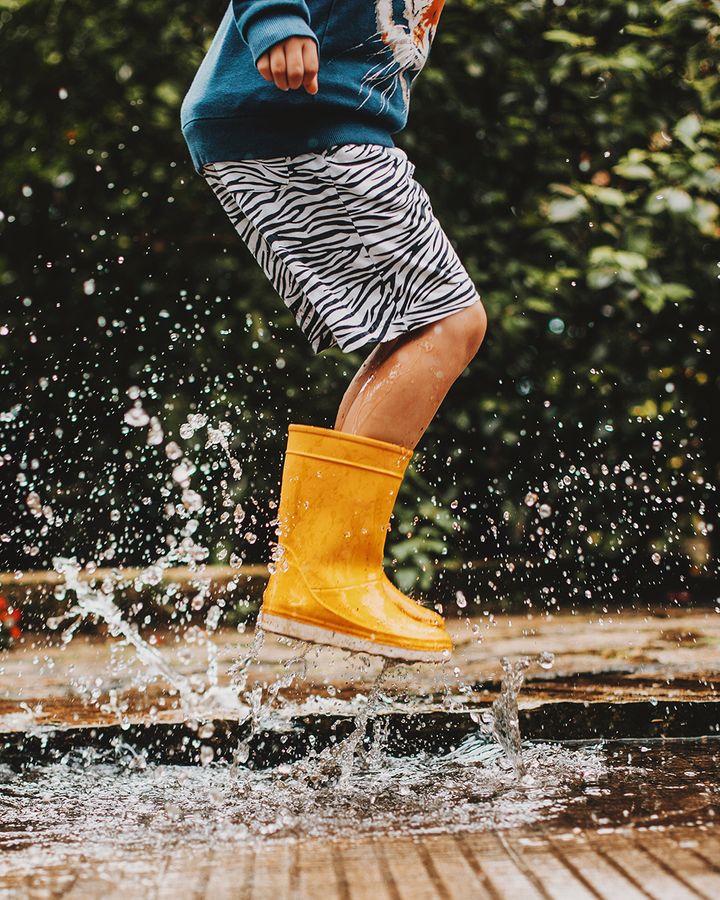
Natural rubber is an invaluable resource due to is wide range of properties – from its elasticity and insulating capabilities to waterproofing
(Credit: Carol Yepes/Getty Images)
Part of the problem is that migrant workers responsible for collecting the rubber still can't cross borders, so trees are going untapped. And the factories which process rubber into usable products stopped for several months during the spring last year. But the bigger issue is that shortages are the result of deep structural problems that aren't easy to fix. That has spurred the hunt for emergency measures that can save us from a rubber crisis.
The obvious answer might be to plant more rubber trees. And once the rubber shortage begins to bite and prices climb, farmers will be incentivised to clear tropical rainforest to plant more rubber. Although palm oil plantations have received far more attention, rubber plantations can be just as bad for biodiversity loss, according to Warren-Thomas.
A spike in prices driven by growing demand in China in 2011 led to massive deforestation in Southeast Asia as governments released forested land for development to cash in on the trend. In Cambodia alone, rubber plantations were responsible for a quarter of all deforestation. Yet it will be a long time before these trees are ready for tapping – the growing process takes seven years.
We could try to squeeze more rubber out of existing plantations. "In Indonesia, there is a big opportunity to increase yield," says Katrina Cornish, professor of bioemergent materials at Ohio State University in the US.
Article continues at: https://www.bbc.com/future/article/20210308-rubber-the-wonder-material-we-are-running-out-of
Could rubber from dandelions make tires more sustainable?
Date 10.03.2021, Author Jack McGovanhttps://www.dw.com/en/could-rubber-from-dandelions-make-tires-more-sustainable/a-56766389
Could the humble dandelion revolutionize tire manufacturing supply chains?
The Russian dandelion helped supply the Allied forces with rubber through the Second World War. Now, tire makers are hoping it could make a commercial comeback.
In 1931, Soviet scientists were on the hunt for a natural source of rubber that would help the USSR become self-sufficient in key materials.
They scoured the vast and various territories of the Soviet Union and tested over 1,000 different species looking for an alternative to the South American rubber tree, Hevea brasiliensi. Eventually, on the steppes of Kazakhstan, they found one.
By 1941, the Russian dandelion, Taraxacum koksaghyz, supplied 30% of the USSR's rubber. During the Second World War, shortages of Havea rubber prompted other countries, including the United States, Britain and Germany, to begin cultivating dandelion rubber.
Once the war was over and supplies returned to normal, these countries — including, ultimately, the Soviets — switched back to Hevea tree rubber because it was cheaper.
But now, with demand for rubber continuing to grow, there is renewed interest in the Russian dandelion, particularly from the tire industry, which consumes 70% of the world's rubber supply.
Diversifying natural rubber
Overall, 65% of rubber consumed worldwide is derived from fossil fuels. This synthetic rubber is cheaper and more hardwearing than its natural counterpart. But natural rubber disperses heat better and has better grip, which is why tires are made with a mix of both.
Today, 90% of natural rubber comes from Havea plantations in Southeast Asia, which have been linked to deforestation. And there are commercial as well as environmental reasons the tire industry would like to find an alternative.
Havea rubber trees are vulnerable to a fungal leaf blight that has hit plantations in South America, making some in the tire industry nervous about such dependence on a single crop, with little genetic diversity, grown in a single geographical region.
Over recent years, projects in both Europe and the US have been taking a fresh shot at making dandelion rubber commercially viable.
Among them is Taraxagum, a collaboration between Continental Tires and the Fraunhofer Institute of Molecular Biology and Applied Ecology in Aachen, Germany.
"Continental Tires tested the performance of the material and said that it was brilliant — in some cases better than Hevea rubber," said Dirk Prüfer, a plant biotechnologist on the Taraxagum team.
Both Continental and competitor Apollo Tyres have used dandelion rubber to manufacture bike tires, and Continental reports "promising" tests on dandelion truck tires.
Apollo was part of the EU-funded DRIVE4EU consortium, a project that ran from 2014 to 2018 and worked on developing the entire production chain for dandelion rubber, starting with cultivation.
Unlike the rubber tree, the Russian dandelion thrives in temperate climates.
"We cultivated the dandelion in Belgium, the Netherlands and Kazakhstan," said Ingrid van der Meer, coordinator of DRIVE4EU, adding that other researchers had previously cultivated the crop in Sweden, Germany and the United States.
Fewer chemicals and poorer soils
The Russian dandelion can also be grown on relatively poor soils, meaning it doesn't have to compete with agriculture. Prüfer said his team was researching whether brownfield land — former industrial sites that may be heavily polluted — might even be suitable.
"There are big areas like this near Cologne or Aachen that could potentially be used for cultivation," Prüfer said.

Fields of Russian dandelion in German countryside
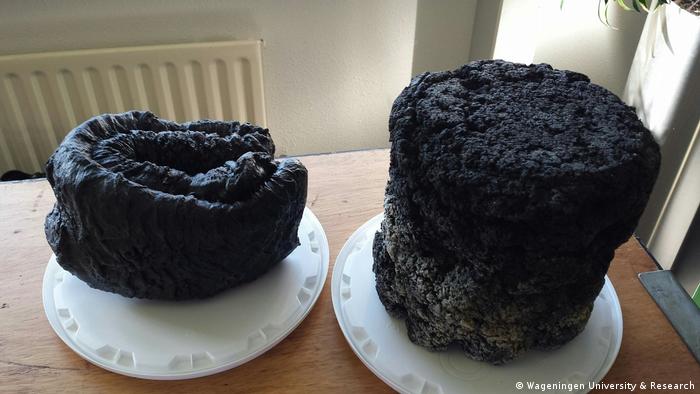
... and the rubber produced from them
Once the dandelions are harvested "hot-water extraction" is used to separate out the rubber. "The roots are chopped up mechanically and water is added," van der Meer explained. "It has to be heated up, but no large volumes of chemicals are needed.
This is in contrast to Hevea rubber extraction, which requires the use of organic solvents, resulting in chemical waste that poses an environmental hazard if not disposed of properly.
Environmental problems persist
But while the Russian dandelion could make the production of tires greener, it won't improve their environmental impact once they leave the factory.
As tires are used, they shed microplastics, which are then carried on air and end up in oceans. A recent study found that this source of ocean microplastics amounts to 100,000 metric tons each year.
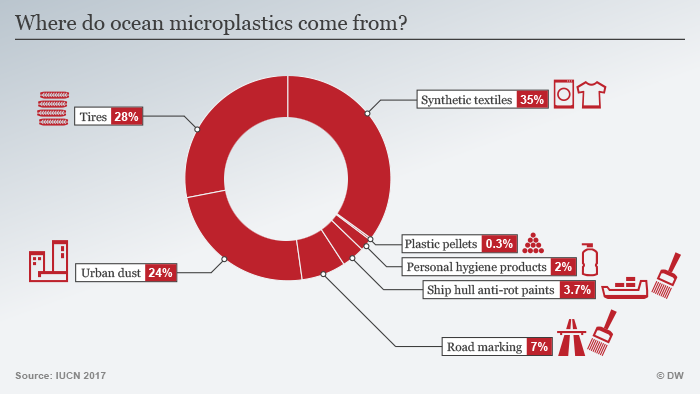
Then, at the end of their life, most tires finish up in landfill, in part because the mix of rubbers make them difficult to recycle.
"Tires are meant to optimize different kinds of properties, so it's not easy to just use one kind of rubber," said Francesco Piccihoni, an expert in rubber recycling at the University of Groningen in the Netherlands.
"You could make tires from only natural rubber but it degrades faster, meaning you would have to change the tires much more often," Piccihoni added.
Even shifting rubber farming to European wastelands wouldn't automatically avert deforestation in Asia. Georg Cadisch, an expert in tropical agronomy at the University of Hohenheim in Germany, says forests will continue to be felled as long as the land can be used more profitably for agriculture.
"Rubber farmers need to survive, so they would simply produce other crops," he said, adding that rubber plantations in China and Thailand have already been replaced with crops like palm oil or bananas.
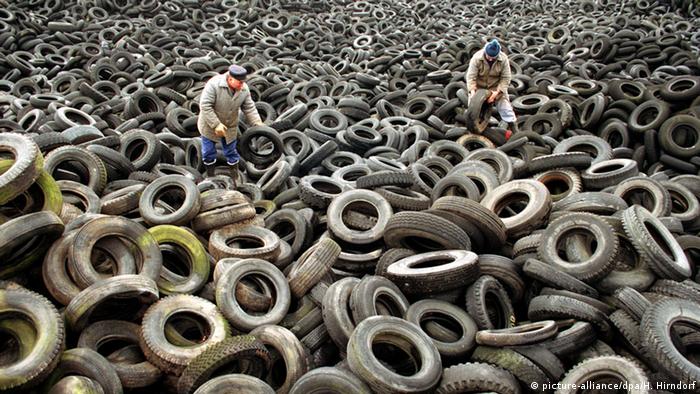
Tires aren't easy to recycle, meaning most of them collect as waste once they're worn out
Bright prospects?
Still, proponents of the Russian dandelion argue that as demand rises, we need a source of rubber that doesn't rely on expanding into new areas of forest. Growing it close to European and US tire factories would also means fewer CO2 emissions from transport.
And as far as performance goes, tire makers are impressed.
"The moment natural rubber from the dandelion is available in significant quantities, Apollo will resume using the material and develop other tire products," chief technical officer Daniele Lorenzetti said.
As things stand, though, the supply chain needs some work. "To compete with other rubbers, the production costs of dandelion rubber need to match the market price. This is not yet the case," said van der Meer, who will continue working on optimizing Russian dandelion cultivation.
For now, Europe's wastelands aren't about to be swathed in sunny yellow. But there might just be a bright future for a material that had been consigned to Soviet history.
Recommend this post and follow The Life of Earth
https://disqus.com/home/forum/lifeofearth/


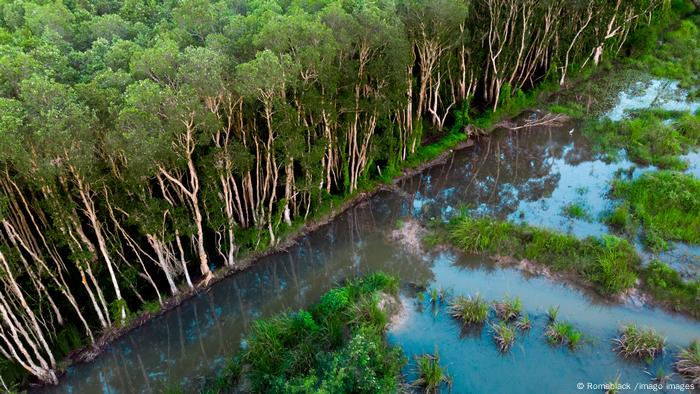

No comments:
Post a Comment
Stick to the subject, NO religion, or Party politics